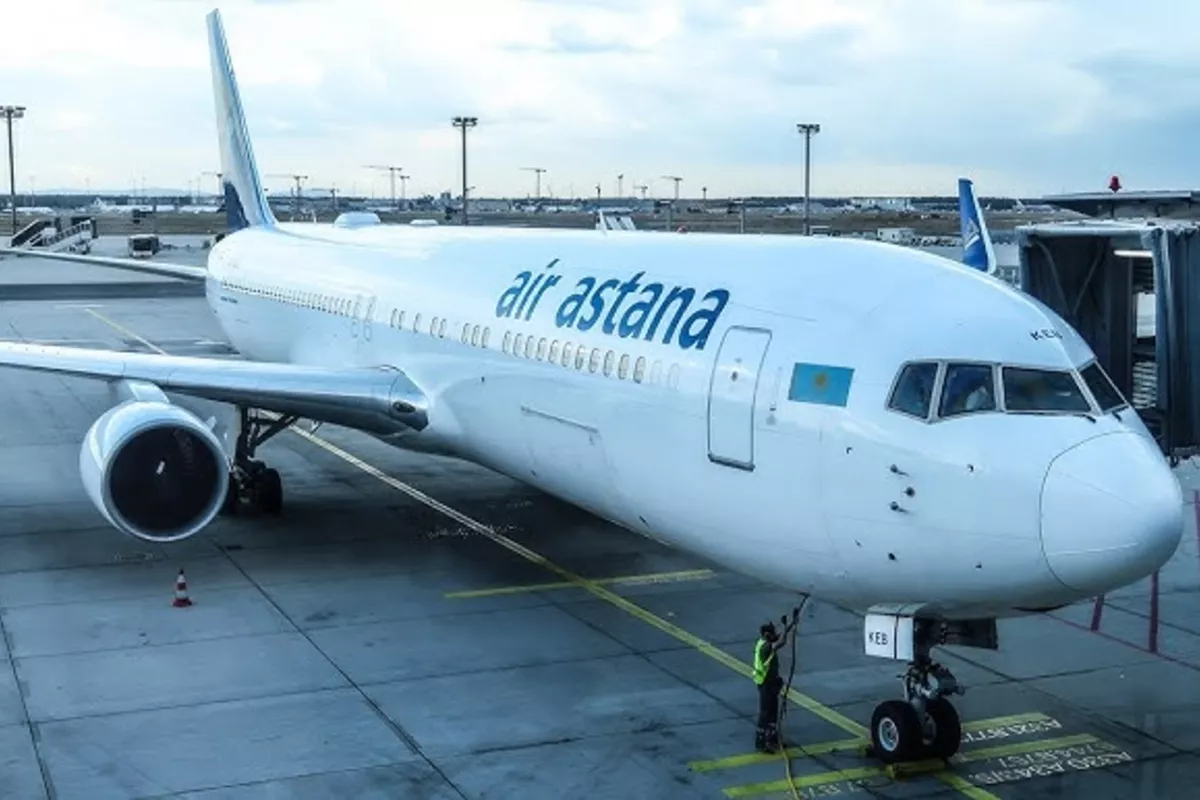
Sanctions on Russia could intensify if U.S. President Donald Trump increases pressure on the Kremlin and Vladimir Putin. However, even without further sanctions, several sectors of Russia’s economy are already under significant strain.
One of the most vulnerable is civil aviation, which is currently struggling with "fleet cannibalization"-a consequence of scarcity and international isolation, The Caspian Post reports citing foreign media.
In this context, alarmist claims from Russian aviation analysts that Central Asian airlines might soon replace Russian carriers not only on international routes but potentially within Russia itself are being reassessed. So, what is actually happening and why?
Squeezing Russia Out
One of the most overlooked aviation developments of 2024 was the announcement at the Central Asian Aviation Summit in Astana that regional countries were forming their own civil aviation regulatory body. As Amir Akhmetov, senior advisor to the director of the Aviation Administration of Kazakhstan, put it: “In the changing geopolitical environment of the republics of Central Asia and the South Caucasus, together with like-minded countries, they are creating their own regional civil aviation organization, the Eurasian Civil Aviation Conference (EACAC).”
This initiative, first proposed by Astana in 2023, includes Kazakhstan, Kyrgyzstan, Uzbekistan, Tajikistan, and Turkmenistan, as well as Armenia, Azerbaijan, Georgia, Moldova, and Mongolia. Although initially scheduled for 2025, the first EACAC meeting took place in Almaty in November 2024.
Russian observers have taken note. The publication Versiya, which had predicted Russia’s marginalization in the Central Asian aviation market as early as 2016, commented on the development in stark terms: “It is hard not to notice that this is truly a momentous event in the field of civil aviation regulation within the EAEU member states, aimed precisely at pushing Russia out of the process… which, after the formation of the announced structure, will de facto exist and be managed under direct Anglo-American influence.”
However alarmist the tone, the underlying concern is not unfounded. Russia’s aviation sector is increasingly isolated and dependent. By December 2024, it was confirmed that a new aircraft maintenance hub would be built in Aktau, one of Kazakhstan’s four major aviation centers. The project, spearheaded by Turkish Technic, YDA, and ASFAT, will serve civil and military aircraft from Kazakhstan, Russia, Uzbekistan, Turkmenistan, Kyrgyzstan, and Tajikistan.
According to then-Minister of Transport Marat Karabayev, “The center will serve 411 civil aircraft… As a result of the project, the airport’s cargo handling capacity will increase to 200,000 tons per year, with an annual turnover of 520 billion tenge ($996.7 million).”
Aviation in Central Asia: A Regional Snapshot
In Kazakhstan, liberalization and competition have allowed the civil aviation sector to flourish. National carrier Air Astana operates hubs in Almaty and Astana and is widely considered among the best airlines in the post-Soviet space. Its low-cost subsidiary, FlyArystan, has grown rapidly, fueled by a strong Airbus fleet, now over 60 aircraft, with new A320 and A321 deliveries annually.
Private airline SCAT flies across the former USSR and Asia, while Qazaq Air, now rebranded as Vietjet Qazaqstan, entered into a strategic partnership in 2025 with Vietnam’s Sovico Group, owner of Vietjet Air. Fleet expansion plans include 20 Boeing 737 MAX or Airbus A321s.
Kazakhstan’s airport infrastructure, Almaty (ALA), Astana (NQZ), Shymkent, and Aktau, is undergoing modernization under the management of global operators such as TAV, Fraport, and Limak. The Open Skies policy now applies to 14 airports, and the country is actively working to align with EASA (European Aviation Safety Agency) standards.
Uzbekistan is not far behind. Its national carrier, Uzbekistan Airways, is modernizing with Airbus A321neo and Boeing 787s. New private carriers, Qanot Sharq, Silk Avia, and Center Avia, are expanding, while major airports like Tashkent and Samarkand are being upgraded. The country also offers fifth freedom rights on selected routes and plans to privatize shares in its national airline.
Kyrgyzstan and Tajikistan have minimal domestic aviation and are heavily reliant on foreign carriers. Meanwhile, Turkmenistan, despite its isolationist stance, operates Boeing 777 and 737 MAX aircraft through state-run Turkmenistan Airlines, which has regained EU flight permission after a 2019 ban.
Capturing the Russian Market: In Theory and Practice
Kazakhstan is now poised to replace Russia in key regional aviation segments, not out of hostility, but necessity. The dangers of fleet cannibalization, now commonplace in Russia due to sanctions and spare parts shortages, are well known in Kazakhstan. A tragic incident involving a cannibalized aircraft crashing shortly after takeoff, killing the entire crew, left a lasting impact. The country has since moved to ensure that such practices never recur.
And while Russian protectionism will prevent Central Asian airlines from fully replacing Russian carriers on domestic routes, opportunities exist on border routes, diaspora services, and transit corridors. Kazakhstan, Uzbekistan, and others are moving to fill the vacuum, safely and efficiently.
Conspiracy theories that paint these moves as orchestrated by London or Washington reflect what many analysts identify as a lingering post-imperial mindset. As the article in Versiya reveals, Russian narratives often deny their neighbors the capacity for independent decision-making, even on critical matters like aviation safety.
Yet the shift is real. And it is hard to argue against it when images of dismantled Russian aircraft parked on remote runways offer visual proof of a system in decline.
Share on social media
